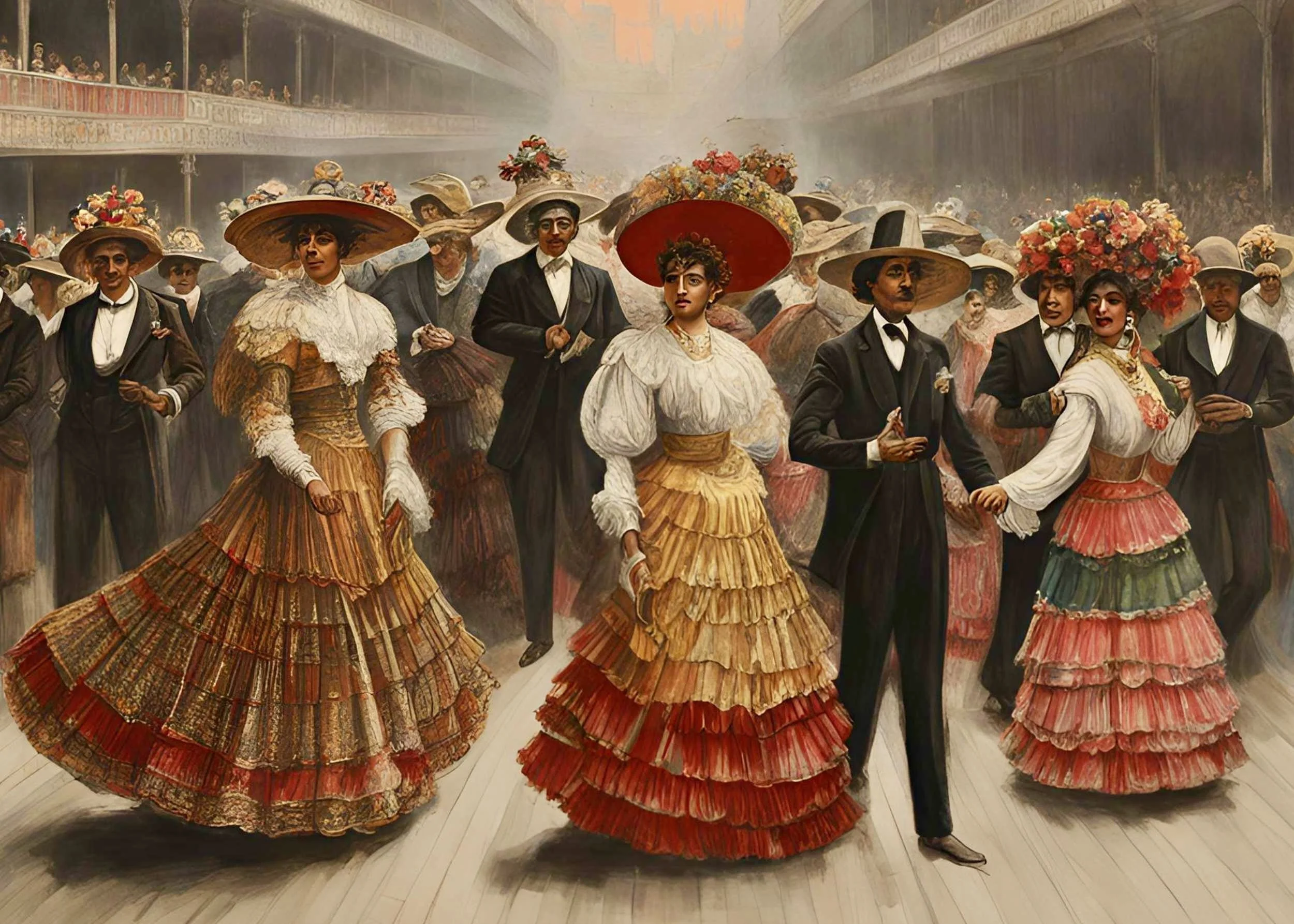The Dance of the Forty-One: Mexico’s Forgotten Queer Uprising
/In 1901, an unassuming home in Mexico City became the epicenter of a cultural earthquake. The police raid that took place on the night of November 17th would reveal what many elites whispered about, but few dared name: a secret ball attended by men, with nearly half of them dressed in women's clothing.
The event would go down in history as El baile de los 41—The Dance of the Forty-One—and though only 41 names were made public, legend has it there were actually 42 men present. The final name on the list? Supposedly erased to protect Ignacio de la Torre y Mier, the well-connected son-in-law of then-president Porfirio Díaz.
This wasn’t just a scandal—it was a cultural eruption. It exposed the underground lives of queer men in early 20th-century Mexico and etched the number 41 into the national psyche as a symbol of queerness. For decades, to be called a "41" was to be mocked, outed, or dismissed. But as history has begun to reclaim truth from shame, the meaning of the number has transformed—once used to erase, now used to honor.
A Society Obsessed with Control
Under Porfirio Díaz’s regime, Mexican society was modeled after European conservatism—Catholic virtue, rigid gender roles, and the public performance of morality. But as with any tight-lidded culture, the underground pulsed with contradiction. Behind closed doors, a fluid world of gender and sexuality thrived in silence. The ball was not merely entertainment—it was survival. An act of self-expression in a time where deviation from the norm could cost your freedom, your family, or your life.
The 41 men caught in the raid were arrested and publicly humiliated. Reports ridiculed their attire, referring to the wigs, corsets, fans, and powdered faces with lurid fascination. Some were forced into military service as punishment, shipped off to Yucatán to perform hard labor. Their crime? Dancing in dresses. Defying a dress code written by patriarchy.
Cross-Dressing as Cultural Resistance
To cross-dress in this era wasn’t a comedic act or a flamboyant hobby. It was dangerous. And yet, these men chose silk over silence. They adorned themselves not as caricatures, but as declarations—living proof that identity can’t be legislated out of existence. Their clothing was not a costume; it was rebellion.
For many of these men, this dance was likely a rare taste of freedom. A night where they could be seen, affirmed, maybe even loved. In that ballroom, there was laughter and glamour and the echo of freedom—a sound quickly crushed when the state kicked down the door. But that echo never fully disappeared.
Legacy, Shame, and the New Narrative
For most of the 20th century, The Dance of the Forty-One was treated like a national embarrassment. The number became taboo—left out of military counts, sports jerseys, government documents. It haunted generations of queer Mexicans as a slur. But over time, artists, writers, and activists began to reclaim the story.
In 2020, filmmaker David Pablos brought the story to the screen with Dance of the 41, a lush, haunting retelling that re-centered the humanity and complexity of the men involved. Museums now host exhibitions exploring the cultural significance of the dance. Scholars have repositioned it as a pivotal moment in Latin American queer history.
Today, the number 41 has become a badge of honor in some LGBTQ+ circles—a nod to resilience and resistance in the face of erasure. It speaks not only to those 41 men, but to anyone who has ever danced at the edge of danger just to feel whole.
Conclusion: A Hidden History, Finally Seen
The Dance of the Forty-One reminds us that queerness is not new, not foreign, and certainly not shameful. These men lived over a century ago, but their struggle mirrors the same themes seen today: identity policed, joy criminalized, and resistance dressed in beauty.
What began as a scandal has become a symbol—not of deviance, but of defiance. Not a footnote, but a foundation.
Their story is Mexico’s story. Their dance was a revolution in heels.
Source(s): Mexico City, Atlas Obscura
Citations:
Franco, Marina. "The Scandal of the 41: Homosexuality and the State in Post-Revolutionary Mexico." Journal of the History of Sexuality, vol. 15, no. 3, 2006, pp. 411–432.
Pablos, David, director. Dance of the 41. Canana Films, 2020.
Rubí, María José. “El baile de los 41: una historia que se sigue contando.” BBC Mundo, 27 Nov. 2020, https://www.bbc.com/mundo/noticias-america-latina-55084119.
Sifuentes-Jáuregui, Ben. Transvestism, Masculinity, and Latin American Literature: Genders Share Flesh. Palgrave Macmillan, 2002.






